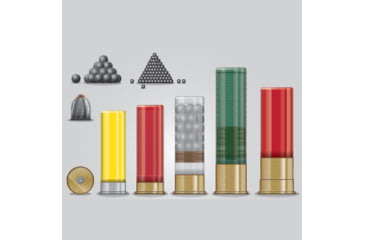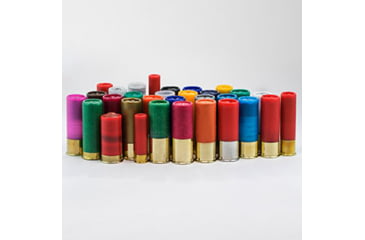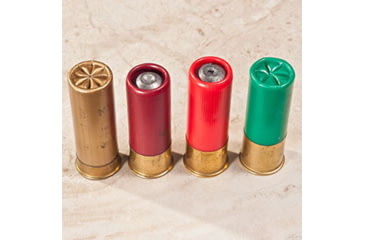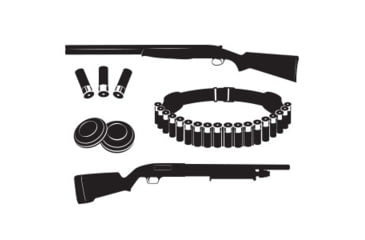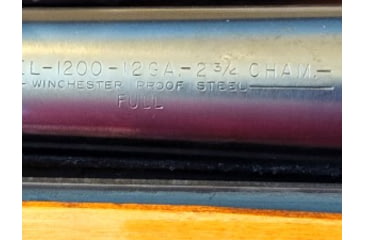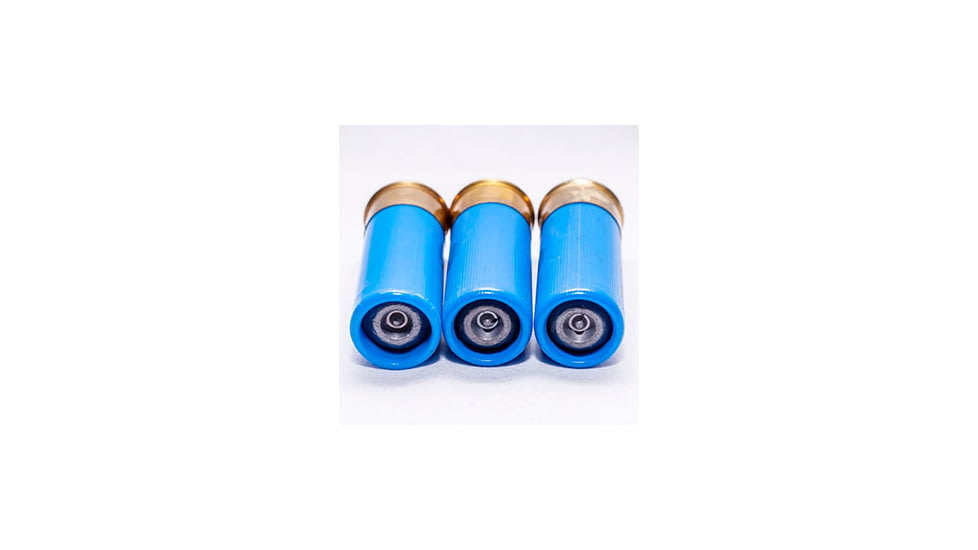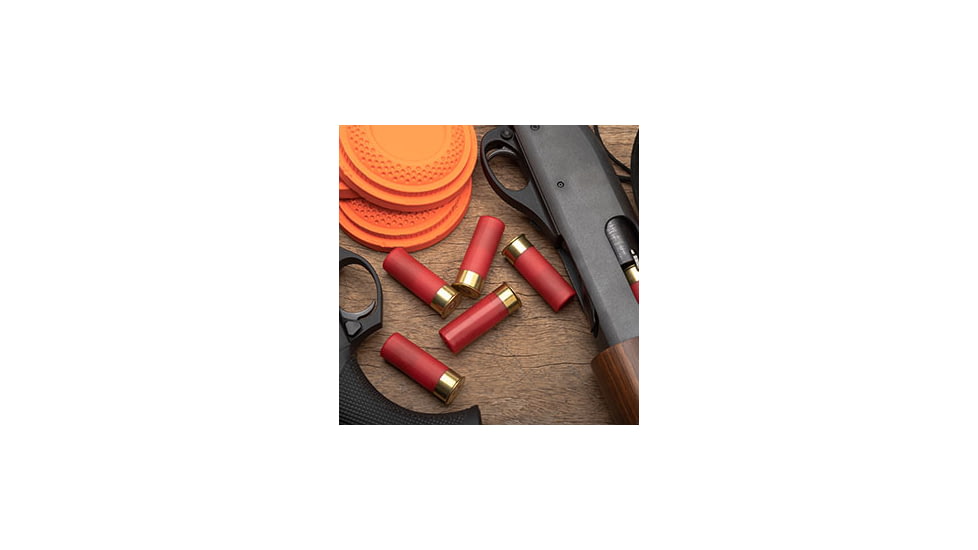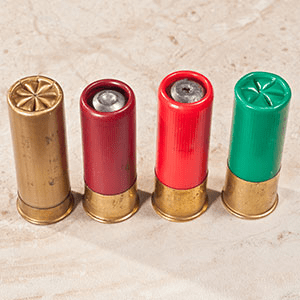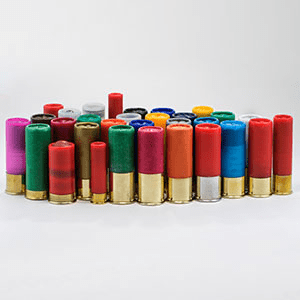The world of shotgun ammo can get confusing with so many types of shotgun shells to choose from because shotguns are the most versatile firearm you can have. The variety of ammunition, shotgun shell sizes, and applications can be overwhelming. Even though the most common shotgun bore is the 12 gauge, these pointers apply to all shotguns from .410 bore to 10 gauge. In this article, I'll cover the three main applications so that you can select the correct shells for target shooting, hunting, and self-defense.![]()
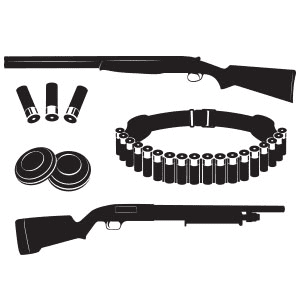
For centuries, shotguns have been loaded with just about anything you can imagine. Legend says even things like rocks, broken glass, and roofing nails were used as improvised loads in old blackpowder shotguns. Whether that's true or not is up for debate, but they're definitely super-versatile depending on what kinds of shells you use.
Just a note before we begin. You'll notice that several of the same kinds of shotgun ammo can be used for different applications. This just showcases how truly all-around handy a shotgun is. A big factor in use and performance is your shotgun choke, so if you'd like to learn more, we'd recommend you read this article on "Understanding the Shotgun Choke: 5 Basics & Beyond." Chokes control a shotgun's "pattern," or how wide the circle of shot is when it hits a target at 30 yards. It's definitely worth your time to learn more about them.
*Always check the gun manufacturer's specifications before firing any type of ammunition through any firearm.
Types of Shotgun Shells
The two basic modern types of shotgun shells are shotshells and slugs. Shotshells are loaded with multiple pellets, and slugs are basically a shotgun bullet, just one big solid projectile. All modern shotgun ammo is centerfire. If you look at the bottom of a shotgun cartridge, you'll see a round metal button right in the center. That's the primer, and the gun's firing pin strikes it to ignite the powder. The resulting pressure forces the projectiles out of the end of the barrel.
There are two types of gun barrels, rifled and smoothbore. "Rifled" means that there are spiraling grooves down the inside of the barrel. Rifling puts the necessary spin on a bullet for accuracy. All modern firearms have rifling, except shotguns. Shotguns are smoothbores with no rifling at all.
They're smoothbore so that the shot comes out as one tight cohesive group of pellets that gradually spread out as they travel forward. If shot is fired through a rifled barrel, the pellets begin spreading immediately in a spiral that disperses the energy and shot very quickly without keeping it in a tight group. It's also not good to use shot through any rifled barrel very often, as it damages the rifling.
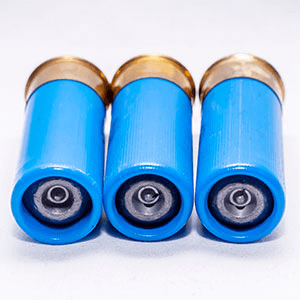
"Rifled slugs" are unique to shotguns, because they have rifling on the projectile itself instead of inside the barrel for use in a smoothbore. The rifling on the slug puts the spin on it so that it travels like a bullet in a rifle or handgun. This allows accuracy through a smoothbore.
Then there are rifled shotgun barrels, often called "slug guns," that are only made for sabot slugs and not shot or rifled slugs. Sabot slugs are smooth like the bullet of rifle or handgun. Technically, a slug gun could be considered a short-range rifle. Slug guns have sights like a rifle, and can usually mount a scope. A slug gun is almost exclusively used to hunt big game at distances up to about 75 yards. Many opt to buy an interchangeable rifled shotgun barrel for their existing shotgun instead of an entire slug gun. It saves money, and the rifled barrel can be easily swapped out for a smoothbore.
Shotgun Shell Sizes
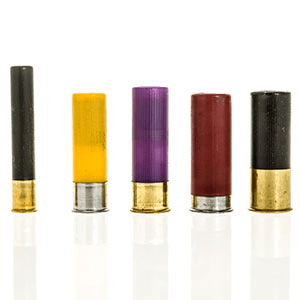
There are three things to understand about the sizes of shotgun shells: gauge, length, and shot size.
Gauge:
Gauges are simply how big the shotgun shell is in the sense of either the diameter or the circumference. There's quite a bit of history around this naming convention, but here I'm just going to cover the basics. It seems contradictory, but the larger the gauge number, the smaller the diameter of the shell is. Here are the most common shotgun gauges in order from largest to smallest:
- 10 gauge
- 12 gauge (most common size)
- 20 gauge (2nd most common size)
- 16 gauge
- 28 gauge
- .410 bore (Notice this isn't a gauge, but a bore measurement. Most just refer to it as a "4-10.")
Length:
This is literally the length of the shotgun round. The three most common are 2-¾ inch, 3-inch, and 3-½ inch. You'll also run across 2-½ inch and relatively new 1-¾ inch shells. Repeating shotguns usually have a tube magazine, and the length of shells determines how many rounds you can load into that magazine. The shorter the shell, the more you can load. The shorter shells also tend to have less recoil than the longer ones, making them more fun for recoil-sensitive or smaller shooters.
You can't just slap any length of shell into any shotgun and fire it off, though.
- Number one, check the manufacturer's specifications to ensure you're not going to ruin the gun or, worst of all, have a catastrophic malfunction resulting in injury or worse.
- Number two, some guns like semi-automatics can be finicky about feeding certain shells. Most won't cycle a 1-¾ shell, and many may not cycle a 2-½ inch. This is because there's not enough power to send the bolt all the way back, eject the spent shell, and cycle the next round into the chamber. Most 3-½ semi-autos will function just fine with 3-inch or 2-¾ inch, but you can find out for sure by checking the owner's manual or manufacturer's website.
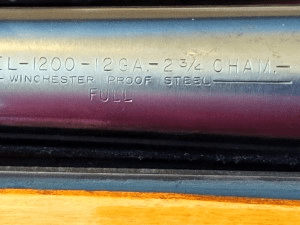
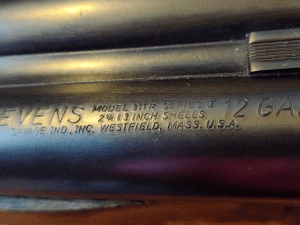
Luckily, there's an easy way to check and see what size of shell your shotgun can handle. On modern guns, it'll be stamped right into the barrel, usually in the neighborhood of the make and model and easy to spot. Some older guns may not have it, but a quick internet search with the make and model will tell you exactly what the specs are.
Shot Sizes:
The next thing to understand is shot sizes, as defined by the American Standard system. Again, the larger the number, the smaller the pellets. They're usually referred to as "number ___" like "#7-½." The smaller the pellets, the more there are in each round.
You'll also see the shot weight, which simply refers to the weight of the pellets loaded into the cartridge. The heavier the shot, the harder the recoil. Most shotgunners advise using shot that's heavy enough to get the job done but not so heavy that it kicks you so hard that you don't want to shoot it again. That'll be up to your tolerance. I've seen 100-pound women firing round after round of heavy shot with a grin pasted on their face and pretty big guys flinching with a medium-weight load.

To bring all of the sizes together and get you learning the lingo, a common birdshot shell is a 12ga 2-¾ inch #7. A great pheasant load is a 20ga 3-inch #5. A .410 2-½ inch #0 (buckshot) could be a great short-range home-defense load. Just gauge, length, and shot size. If there's enough variety, add shot weight to your choice. Easy, right? Don't worry if you get these in a different order, if you look or ask for a #5 20ga 3-inch, it's understood in the ammo world.
As a general rule, the smaller the target, the smaller the shot size, especially for hunting. Once you get to #0's, you're in buckshot territory, and we'll cover that further down. You'll also notice some shot sizes like "BB" or "T," which are mainly for waterfowl. With buckshot or those waterfowl loads, the more letters in the size, the larger the shot. Example: "B" is smaller than "BB," and "000" is bigger than "00." Check out the American Standard shot size chart below for easy reference:
|
Lead Shot Sizes (Birdshot): |
Buckshot Sizes (Lead): |
Steel/Non-Toxic Birdshot Sizes: |
|
12, 10, 9, 8-½, 8, 7-½, 6, 5, 4, 2, BB (0.18in) |
4, 3, 2, 1, 0, 00, 000 |
6, 5, 4, 3, 2, 1, B, BB, BBB, T, F |
Let's get into the three main applications: target, hunting, and defense.
Target Birdshot Sizes
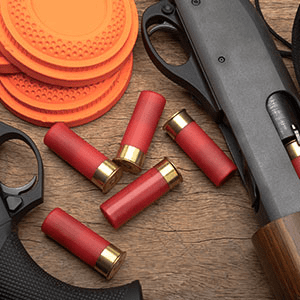
Shotgun targets are usually referred to as "clays" or "clay pigeons." There are three kinds of shotgun target shooting: Trap, Skeet, and Sporting Clays. These shoots can all help improve accuracy when hunting, and they're practiced both casually and in professional competitions. All of the gauges above have been used for this kind of shooting, often determined by the distance of the targets, size of the shooter, and level of difficulty desired. Target shotshells are usually loaded with small lead birdshot sizes, listed here from biggest to smallest:
- #7
- #7.5
- #8
- #8.5
- #9
- #10
Hunting Shells
To start off, always check Fish and Game regulations for the animals and area you're going to be hunting. These are found on their websites, and they have specific reasons for restricting certain kinds of shotgun ammo. Also, it's very important to note that waterfowl can only be hunted with a lead-free non-toxic shot under federal law.
Here's a breakdown of the different types of shotgun shells that are used for hunting. Notice that I'm referencing only shot size and a range of gauges. These gauges are only preferences; hunters have successfully used shotguns of all sizes when paired with the correct shotgun ammunition. I've left out shell length as that's determined by the shotgun and the shooter.
- Pest control like rats or snakes:
- Rimfire shot size: #12 (very limited range)
- Handgun shot sizes: #12 to #4 (very limited range)
- Shotgun shot sizes: #10 up to #8
- Gauge: .410 bore
- Small game like doves, pigeons, rabbits, squirrels, quail:
- Shot sizes: #7.5 up to #5
- Gauges: all 12 ga and smaller
- Upland game birds like grouse, pheasant, partridges, ptarmigan:
- Shot sizes: #7.5 up to #4
- Gauges: all 12ga and smaller
- Waterfowl like ducks and geese (non-toxic):
- Shot sizes: #6 to #1, B to BBB, T to TT, F to FF
- Gauges: 10ga to 20ga
- Turkey, usually combined with a turkey choke:
- Shot sizes: #6 to #1, B to BBB, T, F, also specialized Turkey models
- Gauges: 10ga to 20ga
- Big game & mid-sized game like deer and hogs (buckshot):
- Shot sizes: #4 Buck to #1 Buck ("buck" is added to differentiate from birdshot sizes 4 through 1), 0 to 000 (lingo tip: the zeroes are pronounced "aught," as in "double-aught buck")
- Gauges: 10ga to 20ga
- Big game & mid-sized game like deer and hogs (slugs):
- Instead of shot sizes, measured by weight of projectile
- Smoothbore (standard shotgun barrel): rifled slugs
- Rifled barrel: sabot slugs
- Gauges: 10ga to .410 bore
Especially when hunting multiple species in one trip, many hunters will find a "happy medium" load that isn't overkill for smaller animals or underpowered for larger animals. For example, using #5 for doves, rabbits, pheasant, and grouse. Waterfowlers may settle on a #2 for ducks and geese. Again, none of these are set in stone; they come down to the hunter's comfort level and preferences.
I've been known to throw a few slugs or buckshot shells into a pocket when I go hunting for upland game in seasons that overlap like deer or black bear. You never know what you might stumble across.
Best Shotgun Round for Home Defense
This is the most hotly debated shotgun topic out there including whether or not a shotgun is a good home-defense gun. Since we're talking shotshells here, we'll stick to the ammo and leave the other guns out of it. All gauges of shotgun are candidates for a home-defense gun since it's most likely going to be close-range.
The pest control rimfire and/or handgun rounds mentioned above aren't appropriate for any self-defense scenario because they're sorely underpowered and ineffective for the job. You'd be better off throwing sand in an intruder's face than using pest-control shells.
I'll dispel one common myth: you still have to aim a shotgun in a defensive situation. "Just shoot anywhere and you'll hit your target" is incorrect. Shotguns can still miss, especially in close quarters.
When talking about shotgun ammo for home defense, there are solid arguments for buckshot vs. birdshot, buckshot vs. slug, and even birdshot for home defense. Your ultimate choice boils down to your own factors. Are there kids or other people in the house that would be injured if projectiles came through the walls? Are you in an apartment, townhouse, or duplex with shared walls? You have to figure out what your considerations are because there isn't really a one-size-fits-all choice.
In these times of fluctuating ammunition supply, you may not have the luxury of testing out different ammo through plywood or sheetrock at the range. If you only have one box of shells, your best home-defense shotgun rounds are the ones you have right now.
Here are some pros and cons to consider when picking your best shotgun round for home defense:
|
Type of Shotgun Shell |
Pros |
Cons |
|
Birdshot |
Unlikely to penetrate through walls. More pellets, more chance of hitting the target. At close-range, pellets pattern tightly and act much like a slug. |
More than about 10 feet away the small pellets will disperse and become less likely to penetrate. Grazing an intruder may not have much effect. |
|
Buckshot |
Massive pellets that penetrate deeply at further ranges. Even grazing is going to negatively affect an intruder. Pellets stay more tightly patterned further out. |
Will penetrate through walls, possibly injuring people in other rooms. Pass-through penetration is likely, hitting what's behind the intruder. |
|
Slugs |
Undeniable stopping power. Even a poorly placed shot is most likely going to severely injure and/or incapacitate an intruder. |
Higher likelihood of missing. Pass-through penetration and passing through walls at high velocity is a very real possibility. |
Perhaps the most effective strategy for home-defense scatterguns that is rarely brought up is simply loading it so that there are ever-increasing sizes of shot if the first ones fail to stop the threat. For example, the first two rounds are birdshot, the second and third rounds are buckshot, and the fifth is a slug. This could also be done with each round: #7-½ birdshot for the first round, #4 birdshot second, small buckshot like #4 Buck third, 00 buck fourth, and a slug fifth. This accounts for all of the pros and cons of each type of cartridge.
The shotgun is certainly the most versatile firearm in the world. Just one can provide you with target shooting, hunting everything from pests to big game, and a highly effective home-defense gun all-in-one. It all depends on what kind of shotgun ammo you run through it. An extra advantage is being able to try different loads to see what's best for you. Now you know how to pick out shotshells that you need depending on your application. If you've got a job that needs a gun to get it done, chances are a shotgun can get you over the finish line. Hopefully, I've got you up to speed on shotgun ammunition basics.
What is the Color Code for Shotgun Shells?
Special thanks to Scott N., one of our readers who liked this article but wanted to know more. Scott asked, “l was told that the shell color has some significance, could you please expand on the shotgun shell colors?” Sure thing, Scott!![]()
If you’re anything like Scott, you’ve probably wondered if there’s any reason that shotgun shells come in different colors. The answer is really interesting: yes, no, and kinda. The color-coding of the hulls of shotgun shells is a little muddied, after all. There really isn’t anything else like it in the ammo world. Read our new article Shotgun Shell Colors: What Do They Mean? to find out! Want to learn more? Browse the rest of the Ammo Guides from our in-house experts and enthusiasts or be like Scott and drop us a line with any questions you might have!


